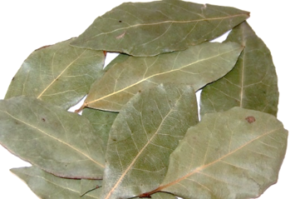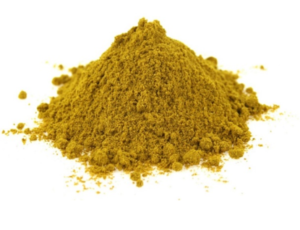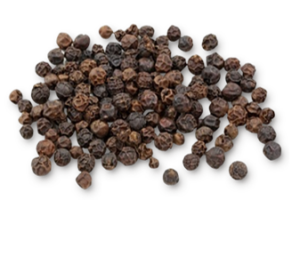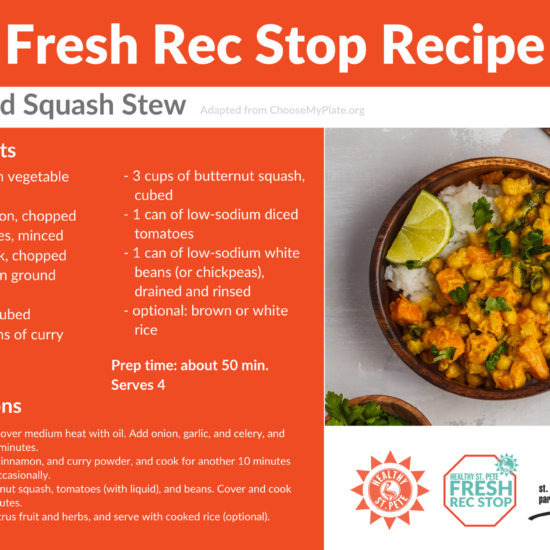CHEF PHILIP’S 10 ESSENTIAL HERBS AND SPICES
Bay Leaves. These subtle-tasting leaves give any dish you put them in an aromatic quality not unlike tea. Your food certainly won’t suffer without a few dried bay leaves thrown in, but you will definitely notice a more complex smell and flavor with them. I put them in everything from pasta sauce, soups and stews, and, my absolute favorite, plain rice. Throw a couple of dried bay leaves in your rice cooker next time and you will see what I’m talking about!

Dried bay leaves
Cayenne. If you like spicy heat, this is your go-to. There are lots of studies showing that cayenne pepper may help with weight management and even help alleviate symptoms of some common ailments. Powdered cayenne pepper is super easy to add to recipes like chili, spicy pasta sauces, soups, and even coffee for a fiery kick in the morning. Be careful; a little goes a very long way!
Cumin. If you’ve ever had taco seasoning or chili powder, you’ve tasted cumin. A primary ingredient in both mixtures, cumin is a staple in the flavor profile of Mexican and Southwest cuisine. I try to avoid pre-made spice mixes so I can utilize each ingredient in different ways rather than a single purpose. Mixing cumin, paprika, and cayenne together will give you a pretty solid start to an excellent chili powder, and you can control how spicy or smokey you want it.
Curry. Curry powder is delicious in Caribbean, Asian, and Indian dishes, with or without a creamy base. It is one of the few pre-mixed spices I keep. I grew up in an Italian home, so I am much more comfortable around the spices I am familiar with. And that’s ok! Often curry powder is combined with Greek Yogurt or coconut milk to make a mild curry sauce, but you can also sprinkle it over cooked potatoes or chickpeas or put it in soups. Lately, I’ve been making curried veggie fajitas. It is a bold, colorful spice without too much heat on its own. I encourage you to experiment with this one.

Curry powder
Oregano. Growing up Italian, oregano was in and on everything: sauces, bread, pizza, beef, chicken fish, cold cuts. The applications of this herb really are limitless. The aroma of oregano cooking is one of my favorites. Many basic dishes can be made vastly better by simply adding a little oregano, some salt, and freshly ground pepper. You’ll find it fresh and dried in recipes and food from all over the world. Get a big jar of the dry stuff and try it.
Paprika. This spice comes in a few distinct varieties, but the most common are probably regular and smoked. The obvious difference is that the smoked one has a smokey flavor while the regular plain variety doesn’t. I like them both, but this is a personal preference. Neither is hotter than the other, and both are quite mild compared to cayenne or red pepper flakes. Smoked paprika is great for adding a little barbeque style to your indoor cooking, but both will work great in Mexican seasonings, meat rubs, and even by itself on chicken and eggs.
Whole Peppercorns. Do yourself the single best favor in the kitchen and get a pepper mill grinder and a jar of whole black peppercorns. Go online and order them right now! Great, now that you’ve done that, you are about to embark on a flavor journey of peppery good smells and impressing dinner guests. Whole peppercorns, when cracked, sweeten the air and add that peppery goodness to any dish that is absolutely impossible to achieve with the pre-ground table version. You’ll want to start using your new pepper mill on fish, chicken, steak, eggs, potatoes, salads, all just to experience the world anew. You can thank me later.

Whole black peppercorns
Red Pepper Flakes. Another pizza toppings staple are these spicy little bits that will add a little heat to just about anything you want. I like to use mine in red sauces, chili, soups, and on poultry. Ranging in color from deep to bright reds, they look gorgeous on a plate. If cayenne pepper is too hot for you, this might be your next best option. If you’re a baker, these little flakes can be baked right into your breads too for a little oomph.
Rosemary. If you want to fill your kitchen with incredible aromas and potentially many people asking, “what are you cooking, it smells amazing?”, throw a little rosemary in your next recipe for a taste that is a little like mint meets pepper. Fresh or dried, either will enhance your cooking with delicious fragrance. Rosemary has many similar applications to oregano but with the addition of sometimes being included in baking, desserts, infusions, cocktails, and more.
Turmeric. This spice has proven and legitimate medicinal uses. In fact, consuming too much turmeric might be reason to talk to your doctor. A little bit will go a very long way and also make your food very yellow. Be careful: turmeric will stain! It’s also one of the main ingredients in curry powder. You can use it on its own in plenty of dishes, especially Eastern-inspired vegetables and rice for a taste similar to a mild, bitter ginger. I like to add turmeric to soups and make Spanish-style yellow rice with it.
Bonus: Cilantro. This can be a bit controversial. It’s often assumed that people either love or hate cilantro. I enjoy fresh cilantro very much in my Mexican-style cooking, but I don’t use it often enough to keep in the fridge. However, I will keep dried cilantro flakes on hand, but I always ask my guests before I use it. Dried cilantro has a much milder citrus-type flavor than its fresh counterpart but is definitely worth keeping around and experimenting with if you are a cilantro lover.
Of course, I have many more spices in my kitchen, but I never go without these. I keep them close to me when I’m cooking, not hidden in a cupboard or pantry. Remember to work smarter, not harder. Use what you love and don’t be afraid to try something new!
Tell me about your favorite herbs and spices; I’d love to hear from you! Call or email me, or stop by one of my Fresh Rec Stop food demos at a center near you.





